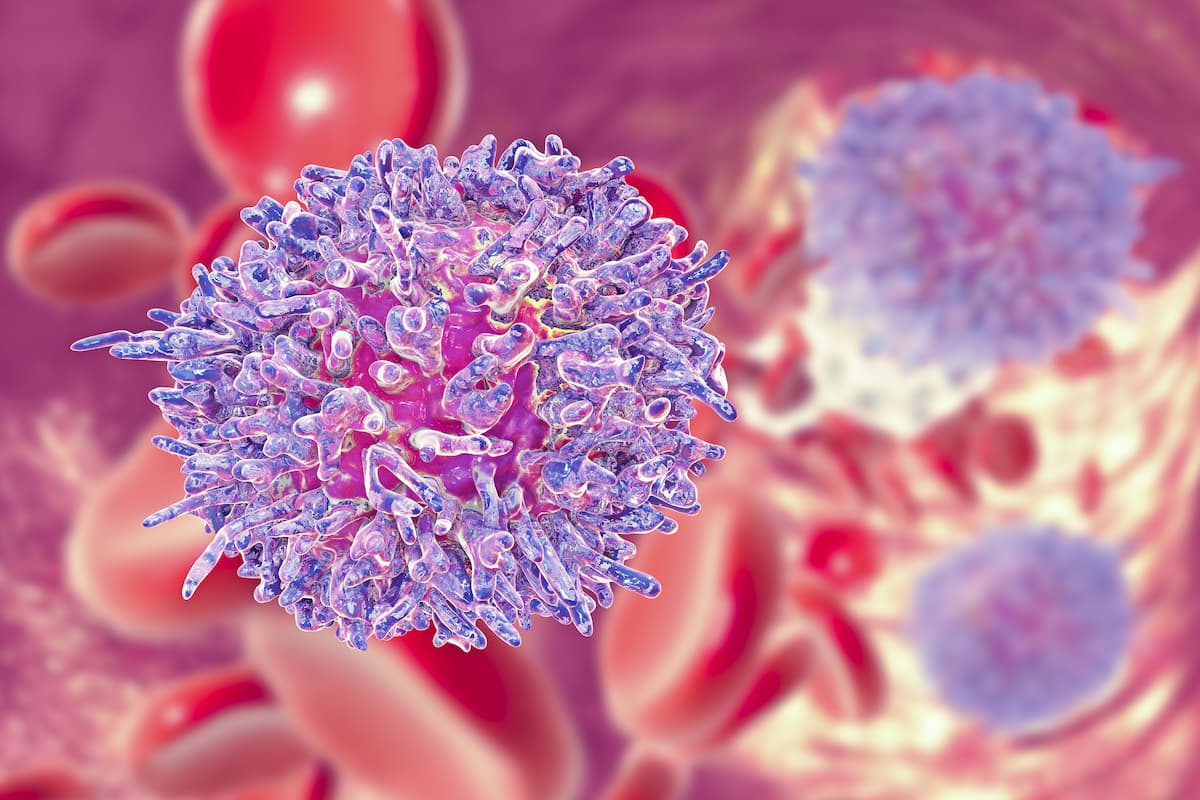Positive PFS and EFS Outcomes Were Elicited by Pirtobrutinib in CLL and SLL
Pirtobrutinib sustained BTK inhibition and improved progression-free survival in patients with CLL and SLL, data from the phase 3 BRUIN CLL-321 trial showed.
Pirtobrutinib sustained BTK inhibition and improved progression-free survival in patients with CLL and SLL, data from the phase 3 BRUIN CLL-321 trial showed.

Results from the prospective phase 3 BRUIN CLL-321 trial (NCT04666038) found improved progression-free survival and positive safety data with a treatment of the third-generation Bruton tyrosine kinase (BTK) inhibitor pirtobrutinib (Jaypirca) monotherapy compared with investigator’s choice of treatment in patients with previously treated chronic lymphocytic leukemia (CLL) or small lymphocytic lymphoma (SLL).
In the study, patients with CLL/SLL were randomly assigned to receive pirtobrutinib monotherapy (n = 119) or idelalisib (Zydelig) plus rituximab (Rituxan) or bendamustine plus rituximab (n = 119; IdelaR/BR). The primary end point was PFS and was met at the trial’s primary analysis in August 2023. The secondary end point was overall survival (OS) with final analysis in August 2024.
At a median follow-up of 19.4 months, patients in the pirtobrutinib arm had a median PFS of 14.0 months (95% CI, 11.2-16.6). At a median follow-up of 17.7 months, patients in the idelaR/BR arm had a median PFS of 8.7 months (95% CI, 8.1-10.4). The independent review committee (IRC) reported that pirtobrutinib reduced the risk of progression or death by 46% (HR, 0.54; 95% CI, 0.39-0.75; P = .0002).
The investigator-assessed PFS showed that at a median follow-up of 19.4 months, median PFS was 15.3 months in the treatment arm (95% CI, 12.8-19.9) vs 9.2 months (95% CI, 7.3-10.6) in the control arm at a median follow-up of 17.5 months. Pirtobrutinib reduced the risk of progression or death by 52% in the investigator assessment (HR, 0.48; 95% CI, 0.34-0.67; P < .0001).
“The investigator assessment of PFS was consistent with the independent review committee,” Jeff P. Sharman, MD, director of research, Williamette Valley Cancer Institute, and medical director of hematology research at the US Oncology network, in Eugene, Oregon, said during a presentation of the data at the 2024 American Society of Hematology Annual Meeting & Exposition (ASH).
Pirtobrutinib was also favored in event-free survival (EFS). At a median follow-up of 19.4 months, the experimental arm had a median EFS of 14.1 months (95% CI, 11.4-17.0) vs 7.6 months (95% CI, 4.8-8.8) in the control arm at a median follow-up of 18.7 months. Pirtobrutinib reduced the risk of an event by 61% (HR, 0.39; 95% CI, 0.28-0.53; P < .0001).
“The event-free survival end point captures not only progression and death, but also discontinuations for toxicity, and thus better captures the integrated efficacy and safety of the intervention,” Sharman said.
The time to next treatment (TTNT) or death was also evaluated. At a median follow-up of 20.0 months, the experimental arm demonstrated a median TTNT of 24.0 months (95% CI, 17.8-29.7) vs 10.9 months (95% CI, 8.7-12.5) in the control arm at a median follow-up of 20.2 months. Pirtobrutinib reduced the risk of starting next treatment or death by 63% with a median TTNT of about 24 months (HR, 0.37; 95% CI, 0.25-0.52; P < .0001). “This captures the overall efficacy of the treatment as patients with IRC-determined asymptomatic radiographic progressions who are benefitting from therapy were not mandated to discontinue treatment,” Sharman said.
When TTNT was stratified by prior exposure to venetoclax (Venclexta), patients who received pirtobrutinib but naive to the BCL2 inhibitor (n = 59/arm) had a median TTNT of 29.5 months vs 12.5 months for those who received IdelaR/BR (HR, 0.36; 95% CI, 0.21-0.61; P = .0001). In patients who were previously treated with venetoclax (n = 60/arm), the median TTNT was 20.0 months in the treatment arm vs 8.7 months in the control arm (HR, 0.37; 95% CI, 0.23-0.60; P < .0001).
“Pirtobrutinib was able to delay subsequent treatment or death for 2.5 years in patients who were naive to venetoclax, demonstrating that continued BTK inhibition can be an effective strategy after failure of first- or second-generation BTK agents,” Sharman said.
Although OS was evaluated, the study was not poweredto detect the difference between the 2 arms, noted Sharman. Further, the analysis was confounded because 76% of patients were allowed to cross over post progression.
PFS among clinical subgroups also demonstrated a consistent benefit in favor of pirtobrutinib and this was observed across molecular characteristics, including TP53 status, complex karyotype, and IGHV status.
The safety profile for the pirtobrutinib was consistent with prior phase 1 and 2 trials. Treatment-related adverse events led to discontinuation in 5.2% of patients who received pirtobrutinib vs 21.1% among patients who received IdelaR/BR treatment. When adjusting for exposure, the incidence rate of treatment-emergent adverse events was lower with pirtobrutinib compared with IdelaR/BR.
Investigators also evaluated adverse events of special interest (AESI) that are common to BTK inhibitors. Any-grade hypertension was reported in 6.9% of patients and grade 3 or higher was reported in 2.6% of patients. “Although patients with atrial arrhythmias were not excluded from the trial, cumulative event rates were low,” Sharman said. “Furthermore, 2 of the 3 subjects with treatment emergent atrial fibrillation had a prior history,” he continued.
“Pirtobrutinib is an effective, well-tolerated agent in patients with difficult-to-treat disease and provides a clinically meaningful way to sustain BTK inhibition,” Sharman concluded.
Reference
Sharman JP, Munir T, Grosicki S, et al. BRUIN CLL-321: Randomized phase III trial of pirtobrutinib versus idelalisib plus rituximab (IdelaR) or bendamustine plus rituximab (BR) in BTK inhibitor pretreated chronic lymphocytic leukemia/small lymphocytic lymphoma. Blood. 2024;144(suppl 1):886-886. doi: 10.1182/blood-2024-198147